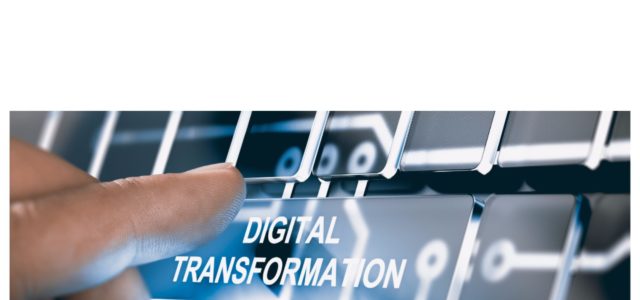Leading Digital Transformation is a weekly podcast series produced in collaboration between The Digital Transformation People and Rob Llewellyn digital transformation advisor and founder of CXO Transform.
During this series, Rob interviews experienced practitioners, authors and thought leaders whose stories and experiences provide valuable insights for digital transformation success.
In this episode, Rob speaks with Jon Ingham a consultant, trainer, speaker and writer focusing on strategic and innovative management and organisation of people. Author of ‘The Social Organization’, Jon helps businesses gain competitive advantage through the creation of human and social capital supported by effective leadership, organisation design, HR and management practices and organisation development interventions. In this interview, Jon speaks about the rising importance of communities and networks for organisations in the midst of transformational change and discusses some of his recent work on the concept of the Melded Network HR model.
“You have a big bang and suddenly people are into a different group reporting to a different manager and it can be very difficult to keep those two structures operating at the same time. However, with these newer organisation forms, you can just lay them on top of each other and it’s very easy then to keep the existing functional structure and just start experimenting with a few teams which you can increase over time. Gradually then the teams become more important than the functions or projects and people just start coming together in communities. It’s a much smaller, softer and it can be a much more incremental approach to change.”
Listen here and read the full transcript below.
Rob Llewellyn [00:00:22] There is an urgent need for companies to shift their focus from developing individuals to enabling networks and relationships between employees. I’m joined today by Jon Ingham, who wrote the book The Social Organisation. He was previously an H.R. director inside the consulting firm E.Y. Now operating as a consultant, trainer, writer and speaker, Jon is focussed on strategic, innovative approaches to people, management and organisation effectiveness. And I’m delighted to have him join us here today.
Rob Llewellyn [00:00:52] Jon, welcome.
Jon Ingham [00:00:53] Thank you, Rob. Great to join you.
Rob Llewellyn [00:00:55] Jon, as you go in and out of different organisations, what are the main types of organisation changes that you’re seeing these days?
Jon Ingham [00:01:03] Well, there’s a lot going on Rob, obviously, and an increasing amount. I suppose the changes that I get involved with are sort of deep organisational changes, you know, because of changes in direction often associated with digital as well. So as business become digital businesses, they need digital organisations as well. So there’s lots of things going on. Well, firstly, the biggest shifts, you know, I still most of the time when I talk to clients about organisational changes, what they first approach me about very often is just a functional restructuring, you know, sort of moving from one functional organisation to another but where I’m trying to get them to think about other broader shifts. And I suppose the first thing because it’s so popular in the media these days is about reducing hierarchy, moving towards self-management. And that can be really useful. But it does tend to be sort of an efficiency [inaudible] change. You know, it’s saving money, it’s making communications better. It can result in greater engagement. But then I also think that if you’ve got a good manager, a great coach in your organisation that you’re reporting to, you know, that’s a really positive enabler for the employee experience as well.
So, you know, hierarchy can be part of it but the biggest shifts and the ones that I wouldn’t say I’m coming across that much, but I am certainly having more conversations about and also, you know, am helping organisations work towards is firstly, well, it’s all about changing direction. I think getting people to focus on the most important things. And that can be about a shift from vertical functions to horizontal teams, particularly with the massive high ranking organisations getting agile, but also more people warranted structures which are about getting people together around things that they’re intrinsically motivated, they’re passionate about and helping them identify work that they can do. So here I’m talking about communities which help people focussing internally within a community, supporting each other and also distribution networks looking externally at the rest of the organisation or beyond the organisation. So increasingly, I’m sort of seeing those four main core ways of organising – functions, teams, communities and networks. And importantly, although I did talk about structure, you know, that’s clearly not the only change. So any of those changes you’re making, and in fact, even just a functional restructure, we should always think about the whole organisation as well. You know, the skills, the relationships and obviously also because of digital technology support for it as well.
Rob Llewellyn [00:03:42] Jon, you said that you know, to do this, it helps if you’ve got a good manager or a good coach. What in your view, makes a good manager, someone who is interested in people?
[00:03:54] To me, you’ve got to be committed and competent to manage. And actually, I’d almost suggest this is the first thing that you should have a look at within an organisation. How do we provide mechanisms that mean that we only ever select or promote people into manager positions if they are committed and competent to manage? And that might be things like dual career streams or this mix of, if organisations are becoming more project-based and developing communities, for example, then you can actually split the role of the manager. So McKinsey, for example, these days are talking about the Helix organisation, where there’ll be a project manager, but also a sort of personal manager, a bit like professional services firms have always had. You know, I think a lot of organisational changes is actually making the role of the manager easier and more effective as well.
Rob Llewellyn [00:04:46] Jon, most people listening will understand the use of functions and horizontal teams. What examples can you give us of companies using communities and networks in their organisation architecture these days?
Jon Ingham [00:05:01] Yes. Well, I mean, I did say that this is something organisations are more interested in and more able to think about, but there still aren’t many organisations organising whole scale like this. And they do tend to be the same organisations that get talked about time and time again and have probably been on the podcast as well. So community organisations. You know, my favourite example is Buurtzorg, which is an interesting one because they actually talk about having teams, but to me, it’s very clear that they’re sort of community groups and nurses, they’re not teams, they’re not focussing on a specific objective. They’re coming together to identify the patients they want to work with and the ways they’re going to do that. It’s a very community way of operating, but you don’t see many organisations which are fully community-based. But what you do see is lots of organisations moving towards communities. And probably the most popular aspect of that is organisations that have centres of excellence, centres of expertise that increasingly they are recognizing are a little bit too stable and too siloed. And they’re changing those into communities to be a little bit looser and more emergent, more flexible and to break down some of the silos in the organisation. Networks – the big example everyone talks about is Gore and there are a few other organisations moving in a sort of network-based direction.
But again, the most popular example is, you know, things like well for digital transformation, the high proportion of organisations which are using digital change agents, digital champions. Jon Kotter, you know, talks about having networks of change in his new approach, in his new change methodology. So this sort of idea of having networks to manage change in organisation is probably the most prevalent use of that organisation form.
Rob Llewellyn [00:06:54] I’ve personally noticed an increase in the interest of change management people management in organisations over the last few years. But what do you see are some of the common challenges that organisations who want to do the right thing, you know, they understand the change and people matter a lot, what you see some of the big challenges that they still need to overcome?
Jon Ingham [00:07:13] Well, I think the biggest change and change management is to recognize that, you know, we’ve never really been terribly successful in leading change from the top down. Sometimes we still need to do it. You know, if you’re going to go into a merger or acquisition, that’s probably the only thing you can do. Although probably the best guidance on that is, you know, don’t do a merger or acquisition. But increasingly, we want to involve people rather than sort of tell them what to do, because that makes change a lot easier and a lot more effective. And therefore, to some extent at least, and I think this is true for digital champions and digital change agents, too, is we need to give people the freedom to make the right decision.
So I think to me, the major challenge in many organisations still because of the traditional top-down environment that we’re moving away from, is wanting people to be able to make the decision about where they are going to go, but trying to ensure that they make the right decision. And, you know, that to me is still a bit of a paradox that many leaders are still struggling with. And of course, the answer to it is, you know, you have to trust your people and believe that the decision that they make will be the right decision. But that still is a new step that I think many leadership teams need to take.
Rob Llewellyn [00:08:30] Now, Jon, you’ve referred to a new organisation form called a MELD, which you contrast to a matrix. Can you explain this meld?
Jon Ingham [00:08:40] Yes. Thank you. So communities and networks, you know, I’m suggesting are newer organisation forms that actually, you know, they’ve always existed for 20, 30 years. It’s just that they’re now starting to be a little bit more popular. Or, certainly the opportunities to use them are starting to be a bit more recognised and a bit more extensive. And I guess that this idea of the meld isn’t new either. But there didn’t when I was sort of researching and trying to start discussing this topic, there didn’t seem to be an existing word or term or phrase for it. So, you know, we know what a matrix is. So in a traditional organisation or even a, you know, an organisation trying to balance a vertical and a horizontal perspective, we often end up in a matrix organisation where some people at least are working in two dimensions, have two bosses, are focussing on sales and managing people or products and geographies or whatever it may be. And actually, just while talking about that, you know, matrices get lots of criticism. But if you do matrix design well they can work, but they do tend to be associated with those older, more work-based ways of organising. Whereas as soon as organisations start to have a look at these softer, more people-oriented structures, you don’t need a hard matrix to make those work. It really is just a case of sort of slotting these different organisation forms together, laying them on top of each other so you can have an existing functional organisation or project-based organisation and just have a layer of communities and let people select the communities that are going to be part of or to participate in networks without having the need for handshake meetings and racy matrix and all of these tools associated with traditional organisations. And I think that’s an important point to make because very often instantly my conversations with organisations helping them think about broader organisation changes than just restructurings, very often people see these new types of organisations as a bit risky. You know, how do we move to horizontal teams or set up networks? You know, that’s completely new and I’m not quite sure how it’s going to work. And to an extent, I see where they’re coming from because they are new and they are different and they do need a lot of focus on communication with inside organisations to explain how they are going to work, particularly to existing leaders and managers, so that they don’t try to manage communities in the same way that they do functions and projects. But actually, because you can meld these different forms together, it’s a lot less risky. You know you don’t need-, so when you do a traditional functional restructure, you have to move directly from one way of organising to another. You know, you have a big bang and suddenly people are into a different group reporting to a different manager. It’s very difficult to keep those two structures operating at the same time. But these newer organisation forms, you know because you can meld them because you can just lay them on top of each other, it’s very easy to keep the existing functional structure and just start experimenting with a few teams, increasing the number, the teams. Gradually the teams become more important, the functions or you know, keeping the existing projects and just starting getting people coming together in communities. It’s a much more softer and it can be a much more incremental approach to change. So I think this idea of melding organisations is a really useful enabler for the type of changes I’ve been talking about.
Rob Llewellyn [00:12:25] And how do these changes relate to digital transformation, Jon?
Jon Ingham [00:12:29] Because obviously that’s our focus on the podcast! And I did say at the beginning, you know, I think the reason that I am now able to have these types of conversations and organisations are beginning to explore and experiment and certainly talk about other ways of organising, is largely because of digital. Because businesses are becoming digital, they’re picking up digital business models which require them to change their organisations and I think the key needs there are firstly to help people work in a more agile, more flexible way, to integrate people so any sort of evidence of siloization within their existing functions is going to be a problem. And also in the same way that digital businesses get closer to their customers, digital organisations need to get closer to their employees. So I think that’s particularly why things like reducing hierarchy are seen as potentially useful solutions, because potentially and you know, I gave my view about that earlier, but potentially reducing hierarchy, moving towards self-management may be a way of improving the employee experience as well. So I think well, firstly, any business becoming a digital business, I.T. is going to be core to that change, that IT effort is probably gonna be based around agile. Therefore, the whole organisation needs to look at scaling up that approach and either developing an agile methodology or at least becoming horizontal and a bit sort of more experimental and innovative. So things like Spotify tribes and guilds are becoming a much better no model, although I’d caution organisations against simply copying that. I think the fundamental idea of introducing horizontal teams and communities is really sound. But just because Spotify used tribes and guilds, you know, you don’t have to use that language you don’t have to use exactly that type of approach in a different organisation. I think digital, you know, I was saying it leads to a growing focus on getting close to customers, but also getting closer to employees. So I think there is a dual focus in digital business in focussing on both task and people, which means, again, there’s a growing need to look at functions and projects to do the tasks, but also communities and networks to grow the people. And technology obviously gives us new opportunities. So any network-based organisation in particular really needs a platform. And that can be a cultural platform. It can be a technological platform, but it’s very difficult to grow an effective network without some type of platform just to make it simple for the network to operate. And technology is obviously enabling us to use platforms more effectively, more extensively, and indeed starting to lead towards this new, this new network-based organisation form of a platform-based organisation and sort of, you know, even in futures or blockchain distributed autonomous organisations where we can pull people together in a very different type of way. So it’s not just about digital transformation, but certainly, if you’re going through a digital transformation I’d look really robustly at your organisation and try and think much more creatively and innovatively about the different ways of organising than we have done before digital.
Rob Llewellyn [00:15:55] Now, Jon, you’ve touched on communities and networks a number of times. What’s your view of enterprise social networks and how well are organisations embracing them?
Jon Ingham [00:16:07] Well pretty extensively. I mean, obviously, they’ve sort of been around for 10 years or so now. And I think, again, they’re another aspect of digital technology, which is enabling organisations to organise in a different new, more people-centric way. So, you know, it is an important question when I’m talking about communities, networks, I’m not just talking about having an enterprise social network or similar type of system. I think that’s a useful enabler. You know, it’s an example of a platform that enables the network to operate. But I think to sort of see yourself as having a network-based organisation, there has to be some organisational focus. The senior leader sponsorship, probably some resources, you know, other more traditional ways of organising which are there to support the community, or network. Communities, networks need to be managed in a different way. And in a sense, they can’t be managed. They can only be nurtured and enabled. But they do need to be resourced and supported in they to be more powerful than simply an enterprise social network supported group would be. And actually, there’s another aspect to this, which is that the Enterprise Social Network needs to be part of the broader organisation. This is part of digital business making everything more integrated. We can’t do things in sort of different silos anymore. They all need to support each other. And one of the things which I think is quite important, if-, if organisation change and if digital technology change are to be effective, is that both of those need point in the same direction. So your choice of organisation form should inform your choice of digital or social technology. And so if you’re a functional organisation, you probably still only need a traditional interanet like SharePoint or whatever it may be. If you’re focussed on horizontal teams, that’s where you’re going to need Slack or Microsoft teams. If you’re a community-based organisation, I think there were less effective systems here. But I really like social community systems, like Telligent. I think Workplace by Facebook probably fits within this category as well. Or if you’re more of a distributed network type organisation, that’s where you’ll want to use Yammer or Jive. So absolutely your choice of enterprise social network should align with, should support, should fit within, but also needs to be enhanced by all of the other things we’ve been talking about.
Rob Llewellyn [00:18:45] Now, sitting at the very heart of organisation change Jon, of course, are people – now is there a link between the organisation forms that you’ve described, and employee experience.
Jon Ingham [00:18:58] Yes, absolutely! So what I was describing at the beginning of the podcast that the functions and horizontal teams are both focussed on getting work done by people. You know, traditionally we’ve taken work, we’ve cascaded down, we’ve asked people to do it. And we’ve organised people to do the work. That’s particularly functions and also horizontal teams. But increasingly, because work is more knowledge-based, is more service-based, is more team-based, is more complex, is more changeable, it’s increasingly difficult [inaudble] work has become much more people-oriented. And therefore, for some of that work, at least, we need to look at taking people together and helping them identify the work they can do in areas that they are naturally passionate and intrinsically motivated to do. So I don’t think you could ever well unless it was like a charity sales centre or something, it’s very difficult to take a service centre and construct it as a community because people need a high level of intrinsic motivation to do it. But there are lots and lots of areas that people are intrinsically motivated by, and therefore you do need to sort of command and control them to do their work. So, you know, in a sense, everything I’ve been talking about is focussed on improving engagement, improving the employee experience by enabling people to come together in more people-centric ways. And then I think the other thing is, is again, the other point that everything across the organisation needs to be holistic and integrated. And if the organisation design is focussed in one direction and the enterprise social technologies we’ve just been talking about are pointing in another that’s going to-, reducing organisational friction and confusion and it’s going to reduce the employee experience as well. So organising, doing things in the way I’ve been talking about. So things like journey mapping, that everyone talks about in terms of employee experience, really, really useful. But actually I think you can get a much better impact on employee experience by designing the whole organisation around people in the way that we’ve been describing.
Rob Llewellyn [00:21:13] Jon, we’re gonna have to wrap it up. There has been terrific speaking with you. And I know that the subject you’ve been talking to us about today will resonate with so many of our listeners. So where can people go to learn more about what you’ve been telling us about?
Jon Ingham [00:21:24] Well, firstly, thank you, Rob. It’s been great talking to you and thank you, everyone, for listening. If you do want to know anything more about all of this, my contact details are: LinkedIn profile, Twitter, and website.
Rob Llewellyn [00:21:48] And we’ll put links to those in the show notes. Jon, thank you so much for your time today. Thank you, Robert. Really appreciate it.
Announcer: [00:21:58] We hope you enjoyed this episode of “Leading Digital Transformation” with Rob Llewellyn and The Digital Transformation People. Visit www.thedigitaltransformationpeople.com to secure the knowledge, talent and services you need for digital transformation success. To continue your journey as a certified transformation professional, visit www.RobLlewellyn.com. Be sure to subscribe to the podcast and follow us on Twitter @TheDigitalTP and @RobertLlewellyn
Article by channel:
Everything you need to know about Digital Transformation
The best articles, news and events direct to your inbox
Read more articles tagged: Collaboration, Employee Experience, Featured, Leadership, Organisational Design







